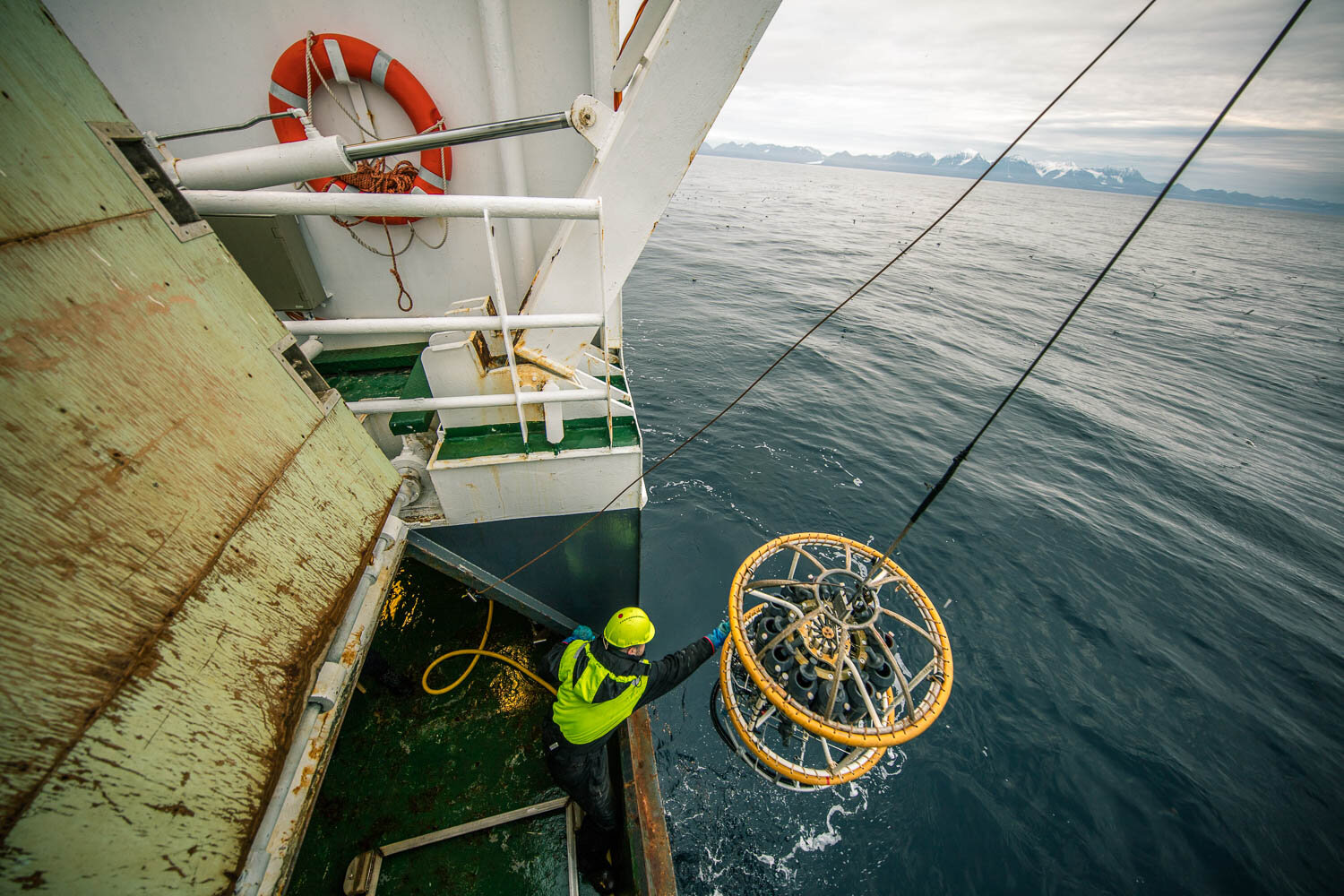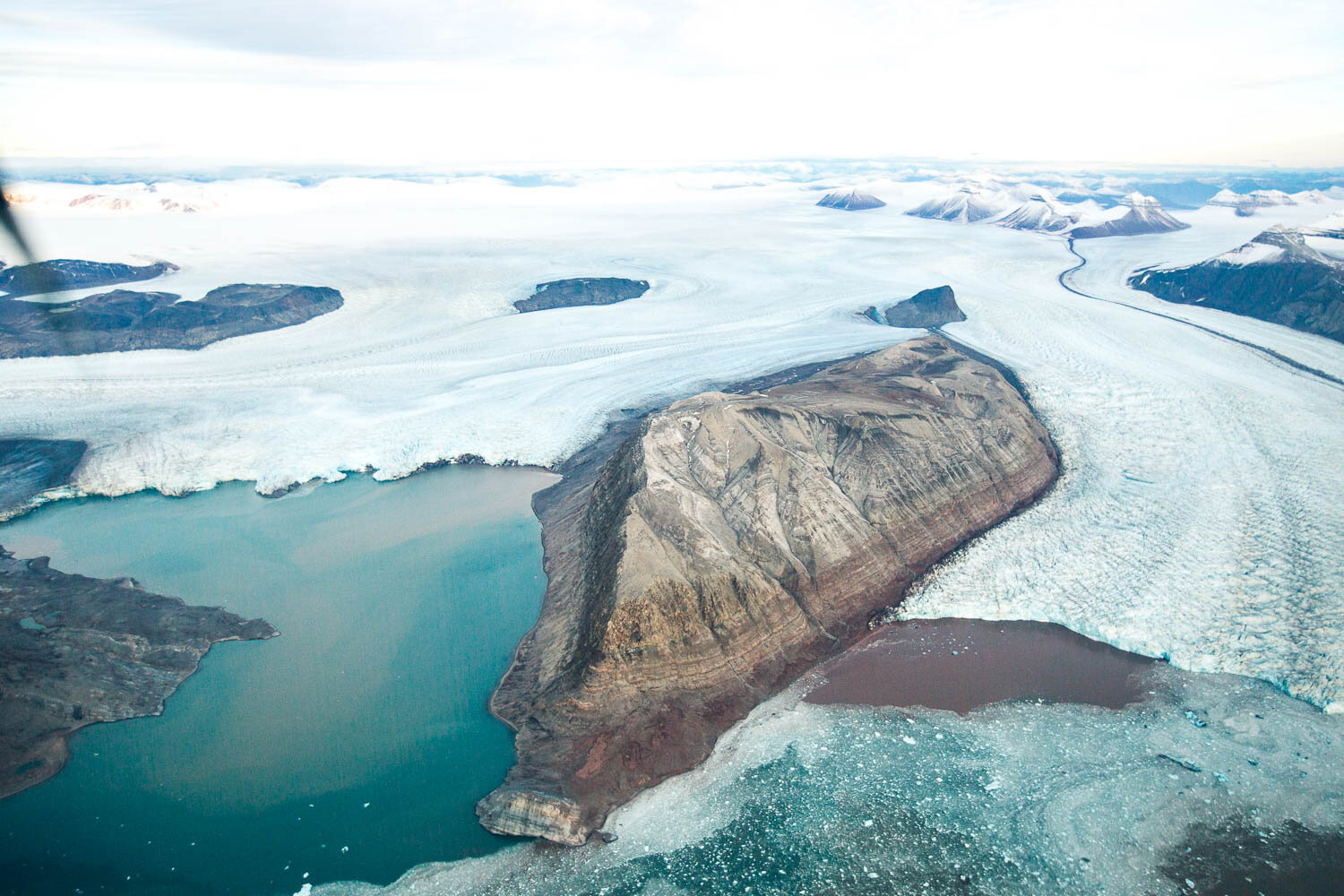
SVALBARD: ARCTIC COD AND CLIMATE CHANGE
Fish is Norway’s most valuable export, more than its vast oil fields. And in the delicate Arctic ecosystem around Svalbard, scientific monitoring is essential to preserving fish stocks.
Knut Sunnanå looks out from the bridge at the Barents Sea. “It’s very good,” he says. “I think that the students are fitting in well and you guys are not causing too much trouble. I’ve had no complaints.” It’s a relief. We’ve joined Sunnanå, the chief scientist, and his team aboard the RV Helmar Hanssen for the first few days of a research cruise in the waters around Svalbard. The ship is a 63m converted prawn trawler, part laboratory and part university. There’s even a tiny lecture theatre built into the cramped accommodation deck. The crew is a mixture of fishermen, PhD and Masters students. Each has a different role in finding out about Svalbard’s delicate ecosystems and the fish that rely on them.
Fish is Norway’s most valuable export, more than its vast oil fields. As many in the fishing industry are keen to point out, fishing will still be going strong long after the oil is gone. “With that importance comes responsibility,” explains Jack-Robert Møller, UK Director for the Norwegian Seafood Council. “Norway recognises that we need to protect fishing as a viable industry for the future. That means looking after the fish stocks, looking after the fishermen and looking after the environment.” In Marine Stewardship Council assessments, Norway is consistently the highest scoring nation for its management and it’s easy to see why.
The Barents Sea is the source for nearly two-thirds of the UK’s Cod. It’s about 200 metres deep and almost all of the ocean floor is dull mud.
In a few pockets, particularly in the north around the islands of Svalbard, there are cold-water corals, sponge gardens, and extraordinary animals called sea pens. Looking like ferns and strange fractal tulips, these filter feeders are easily damaged by trawls. In the process, they ruin nets and spoil catches so the fishing industry is understandably keen to avoid them and skippers keep maps of any encounters.
Norwegian fisheries are extraordinarily well-regulated, something that helped the Barents Sea cod and haddock to win MSC certification five years ago. Each batch of fish comes with a certificate showing where it was caught and those certificates show a trend. While there’s evidence of occasional trawling north of Svalbard as early as the 1970s, it’s becoming increasingly common as warmer winters mean less ice and more fish.
This trend drew the attention of Greenpeace. Concerned that retreating sea ice was opening previously pristine areas to trawling, they started a campaign in early 2016 for a moratorium on trawling north of the 75th parallel. Norway had already closed a 14,000km2 area around Svalbard to fishing, and now faced the prospect of further closures. But Norwegians are pragmatists. They analysed their data and six months later created one of the largest ever voluntarily closed areas. The fishermen hope that much of the closure will be temporary until Norway’s army of marine biologists can find out for sure what animals are living in the dark waters.
We were along for the ride to find out more about how Norwegian scientists work to understand the Barents Sea ecosystem and the myriad strange creatures that call it home.
The plan was to conduct an ocean transect, a series of short mid-water and bottom trawls at set points around the Svalbard archipelago. The catch is tiny – this is a research boat, not a commercial trawler. The students joke about a small lunch tomorrow as a few cod come aboard along with smaller fish and debris from the bottom trawl.
Below decks in the first of three labs, students sort the catch. A dozen large fish are followed by a few dozen smaller ones and a selection of rocks, hermit crabs and starfish. A strange collection of tiny dark blobs brings interest and for the first time, the students fail to identify a species. “It’s clearly alive,” says Sunnanå, “either a creature or collection of creatures”. It’s carefully recorded for identification back on land and there’s palpable excitement at finding a species none of them knows.
A deck above, another much smaller trawl is taking place. “Plankton scientists will tell you their subject isn’t sexy like whales and sharks, but it’s the most important,” says Sunnanå. Arctic food webs are small, the relationships between species are tight, and plankton underpins everything. You can draw a line with each change having clear consequences for the species that eat it, further up the food chain. In the plankton sample brought aboard, we see sea-angels, beautiful inch-long semi-transparent creatures that swim up to the glass with wing-like fins.
They’re followed by the CTD (Conductivity, Temperature, and Depth), a strange device originally developed by the Woods Hole Oceanographic Institute, it looks more suited to a Mars mission than a mission to the bottom of the sea. My guide points at the screen as the instrument drops 193 metres, to hover 17 metres off the seabed. As it sinks, it samples the water, testing salinity, temperature, pH and CO2. These last two are important for our beautiful zooplankton. Too much CO2 or too acid a pH and these creatures will be in trouble. Sometimes the front line in climate change is tiny and delicate.
By testing ocean salinity and temperature Sunnanå’s team can see where the water came from. In this area more often than not, that means the Atlantic. The Atlantic current, also known as the Gulf Stream used to flow to the west of Svalbard at a rate of 11.5 million tonnes of water every second, but the Arctic is changing. Now the stream splits, running to the east and into Svalbard with warm Atlantic waters now appearing in the Svalbard fjords.
“We’re also seeing mackerel for the first time around Svalbard…” says Sunnanå “…and the return of blue shell mussels – a species that hasn’t grown here for 2,000 years.” And with the warm water come plankton.
The Atlantic zooplankton moving northwards with the warm water have far less fat than their northern cousins. Three times less. And while low-fat foods may be good for overeating humans, they’re a real problem for the seabirds here. low-fat plankton means smaller birds and chicks maturing later. So, the water’s plankton content is hugely important for Sunnanå. For him, it provides a measure of the changes happening as well as a measure of how strong the cod stocks will be.
“We are mostly concerned with the fact things are changing and can change very quickly. Although we have a long-term trend that is quite clear, the big changes also take place in just a few years. And on some occasions, there can be a substantial lack of food in the system, probably due to some mismatch during the spring time and things like that or [it’s due to] predators.”
And there’s the irony. Those predators eating Sunnanå’s Atlantic plankton include Atlantic cod, increasingly found further and further north. And while the warming seas and Atlantic plankton spell trouble for seabirds and polar cod, they’re great news for the Atlantic cod. These fish, beloved by Brits for our fish and chips, are thriving in the Barents Sea with 80cm to metre-long specimens now commonplace.
“The commercially important fish species like cod, haddock and capelin are all situated in the warm part of the Barents Sea so for them, it should be good.”
Good fisheries management is often about having a system to monitor changes and adapt to them quickly to protect stocks, ecosystems and livelihoods. With the rapid and increasing pace of change in this part of the Arctic, it’s of some comfort to know the Norwegians are in charge.
Text: James Simpson / Marine Stewardship Council











